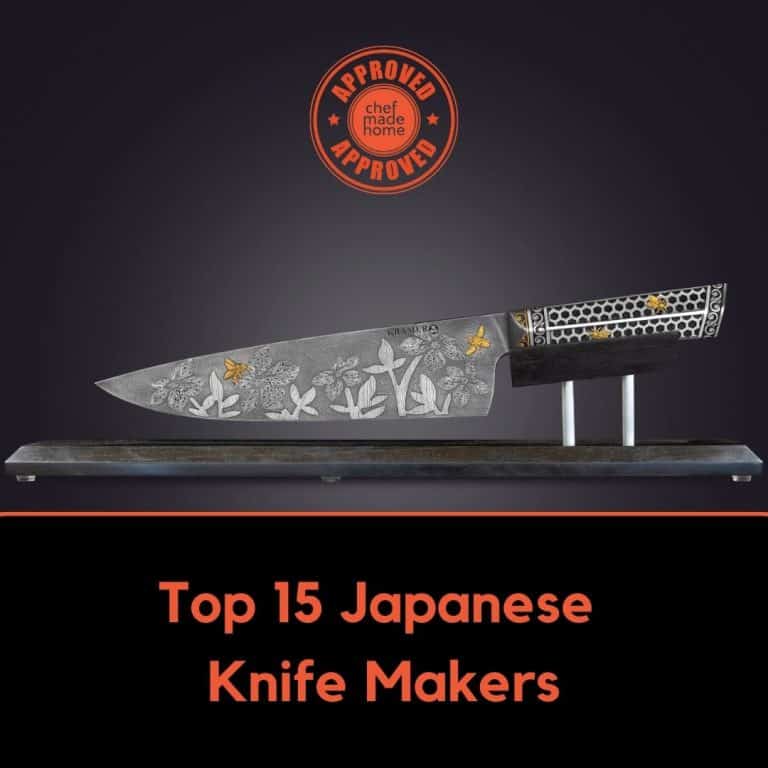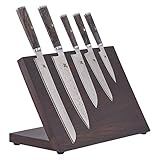Picture this: you’re chopping away at your kitchen counter, your dull, worn-out knife barely making it through an onion. You’re sweating, frustrated, and it feels like you’re working with a butter knife. It’s time for a serious upgrade.
Enter the world of Japanese knife brands, where precision and performance meet centuries of tradition. In this article, we’ll cover:
The rich history of Japanese knife making and its connection to sword crafting
How Japanese knives stack up against Western style knives
The unique characteristics of traditional Japanese knives
The various types of steel used in Japanese knives and which is best
The top Japanese knife makers you should know about
A comparison between Japanese and German knives
The one knife everyone should have in their kitchen arsenal
Sharpen your senses and get ready for a cutting-edge journey through the art of Japanese knife craftsmanship. Let’s dive in!
History Of Japanese Knife Making
The history of Japanese knife making is as sharp and fascinating as the blades themselves. It all began over a thousand years ago with the forging of samurai swords, which are still considered some of the finest weapons ever created.
Swordsmiths, dedicated to their craft, honed their skills to create blades that were not only deadly but also works of art.
As Japan transitioned from a feudal society to a more peaceful one, these skilled swordsmiths shifted their focus to crafting high-quality knives for everyday use. They adapted their techniques and knowledge of metallurgy to create knives that were exceptionally sharp, durable, and beautifully designed.
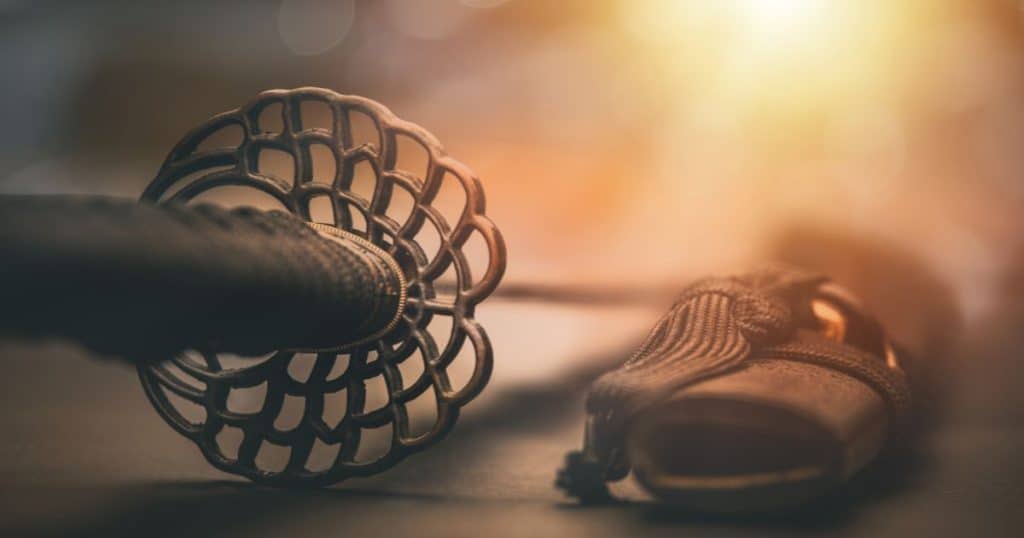
The result? Japanese knife making has evolved into an art form, with blades that are not only functional but also showcase the craftsmanship of their makers.
Today, Japanese knives are sought after worldwide for their exceptional quality and performance in the kitchen. In the next section, we’ll explore the differences between Japanese knives and their Western counterparts.
Japanese Knives Vs Western Style Knives
When it comes to kitchen knives, Japanese and Western style knives each have their unique characteristics and benefits. Here’s how they stack up against each other:
Blade Shape: Japanese knives typically have a more slender and delicate blade shape compared to Western knives. This allows for more precise, delicate cuts and intricate knife work. Western knives, on the other hand, often have a broader and more curved blade, making them well-suited for rocking motions and slicing through larger ingredients.
Blade Edge: Japanese knives usually have a single bevel edge, meaning they’re sharpened on one side only. This creates an incredibly sharp cutting edge, perfect for tasks requiring precision. Western knives typically have a double bevel edge, sharpened on both sides, which makes them more versatile but slightly less sharp.
Blade Hardness: Japanese knives are generally made from harder steel, which allows for a thinner and sharper edge. However, this can make them more brittle and prone to chipping. Western knives use softer steel, resulting in a more durable, but less sharp blade.
Maintenance: Due to their harder steel and thinner blades, Japanese knives require more careful handling and maintenance. They may need to be sharpened more frequently and are more sensitive to damage. Western knives are generally easier to maintain, with their softer steel and thicker blades, making them more forgiving for everyday use.
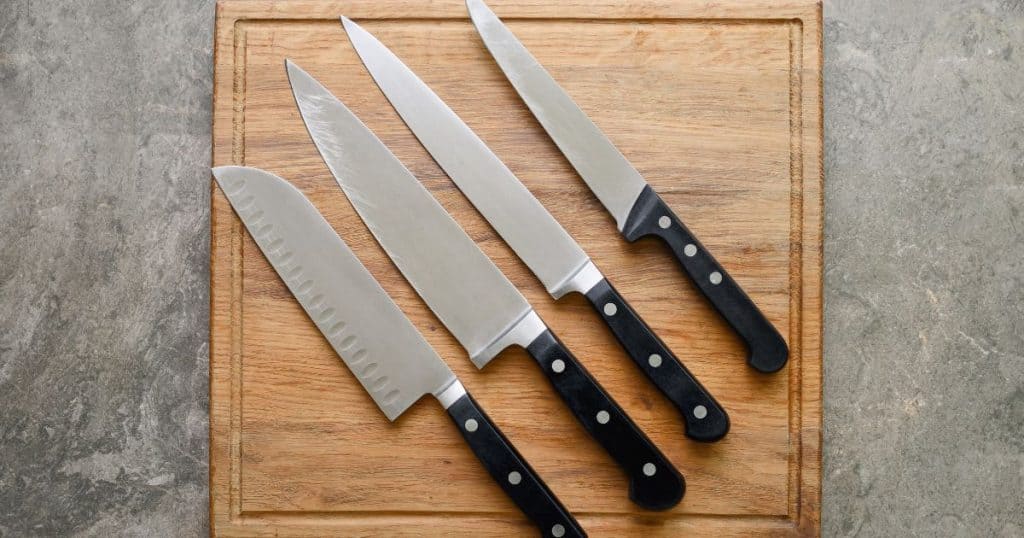
Ultimately, choosing between Japanese and Western style knives comes down to personal preference and the specific tasks you’ll be performing in the kitchen. Some chefs prefer to have a mix of both in their arsenal to take advantage of each style’s unique strengths.
In the next section, we’ll take a closer look at traditional Japanese knives and their features.
Traditional Japanese Style Knives
Japan has a long history of producing a wide range of specialized knives, each designed for a specific purpose in the kitchen. Some of the most well-known traditional Japanese knives include:
Gyuto: This versatile chef’s knife is the Japanese equivalent of a Western chef’s knife. It’s perfect for slicing, dicing, and chopping a variety of ingredients.
Santoku: Meaning “three virtues,” the Santoku is another versatile knife that excels in slicing, dicing, and mincing. It has a shorter blade than the Gyuto, making it a popular choice for home cooks.
Nakiri: A vegetable knife with a rectangular, thin blade, the Nakiri is perfect for chopping and slicing vegetables with precision and ease.
Yanagiba: A long, narrow-bladed knife used primarily for slicing raw fish, the Yanagiba is the go-to knife for sushi chefs.
Deba: A sturdy, single-bevel knife designed for filleting fish and breaking down poultry, the Deba is the workhorse of Japanese knives.
Usuba: A single-bevel knife with a thin, flat blade, the Usuba is ideal for peeling, slicing, and chopping vegetables, particularly for decorative purposes.
Sujihiki: A long, slender knife with a double-bevel edge, the Sujihiki is perfect for slicing boneless meats and fish with minimal resistance.
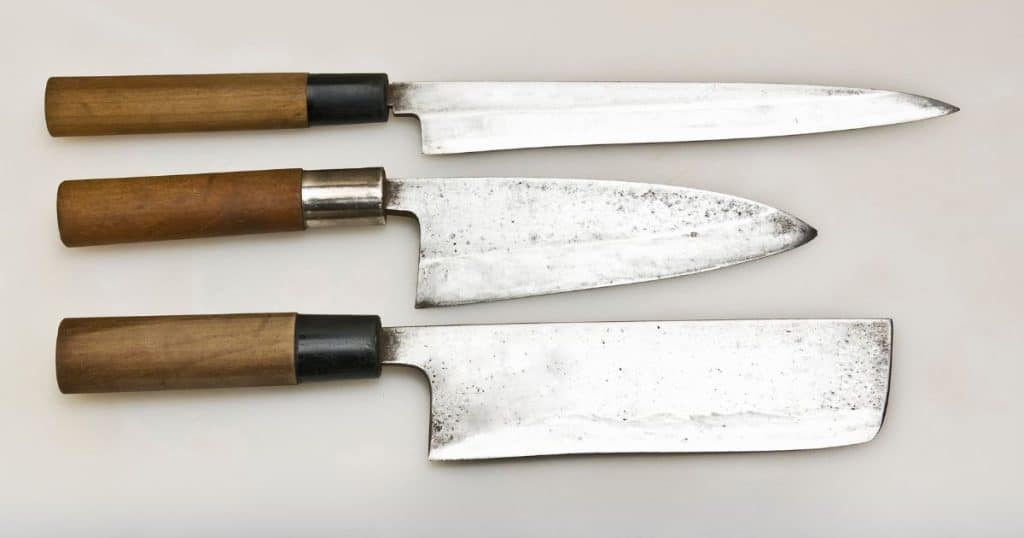
These are just a few examples of traditional Japanese knives, each with its unique purpose and design. With such a diverse range of blades, Japanese knives can elevate your cooking and help you achieve precise, beautiful results in the kitchen. In the next section, we’ll explore the different types of steel used in Japanese knives and which is best for your needs.
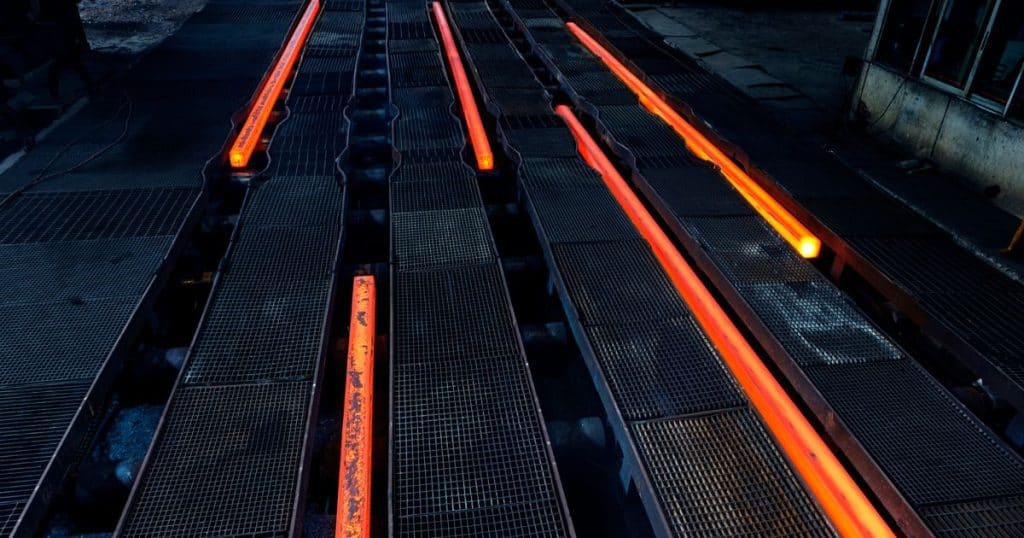
Types Of Steel Used In Japanese Knives
Japanese knives are known for their exceptional sharpness and durability, thanks to the various types of steel used in their construction. Here’s an overview of some popular types of steel used in Japanese knives, including their Rockwell hardness and properties:
Carbon Steel: A traditional choice for Japanese knives, carbon steel is known for its exceptional sharpness and ease of sharpening. However, it’s prone to rust and discoloration if not properly cared for.
Damascus Steel: Known for its beautiful, wavy patterns, Damascus steel is created by layering and forging different types of steel together. This results in a strong, sharp blade with excellent edge retention.
VG10: A high-quality stainless steel, VG10 is popular for its sharpness, edge retention, and corrosion resistance. It’s often used as a core steel in Damascus knives.
Molybdenum Steel: A type of stainless steel that contains molybdenum, which increases the steel’s strength, hardness, and corrosion resistance.
Powder Steel: Made through a process called powder metallurgy, high speed powdered steel results in a highly uniform steel composition. This allows for excellent sharpness, edge retention, and corrosion resistance.
Rockwell hardness is a measurement of a material’s hardness, or its resistance to indentation. The higher the Rockwell hardness number (HRC), the harder the steel. Harder steel typically holds a sharper edge for longer but can be more brittle and prone to chipping.
Here’s a comparison chart of the different types of steel used in Japanese knives:
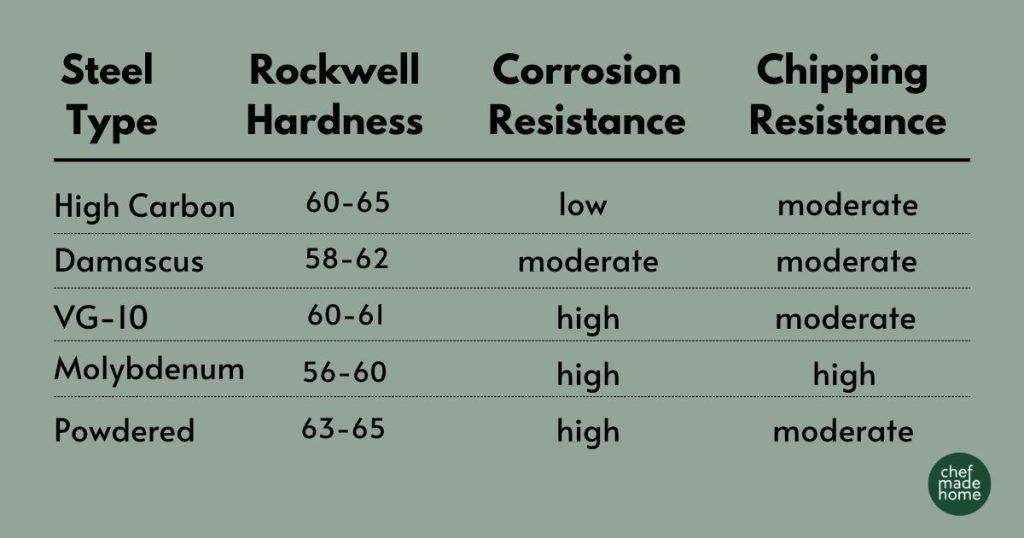
Choosing the best steel for your Japanese knife depends on your priorities and how you plan to use the knife. Factors such as sharpness, edge retention, corrosion resistance, and chipping resistance all play a role in determining the right steel for your needs.
Steel Used In Western Style Knives
Now that we’ve explored the types of steel used by most Japanese knife brands, let’s take a look at the steel commonly found in Western style knives. While there’s a wide variety of steel types used in the production of Western knives, some of the most popular options include:
Stainless Steel: The most common type of steel used in Western knives, stainless steel is known for its corrosion resistance and durability. It’s more forgiving than some of the harder Japanese steels, making it easier to maintain and less prone to chipping.
High Carbon Stainless Steel: A blend of high carbon steel and stainless steel, high carbon stainless steel offers the best of both worlds. It combines the sharpness and edge retention of carbon steel with the corrosion resistance of stainless steel.
Tool Steel: A high-performance steel, tool steel is typically used for heavy-duty cutting tasks. It’s known for its excellent wear resistance and edge retention but may be more prone to corrosion than stainless steel.
Carbon Steel: Similar to Japanese knives, some Western knives are also made from high carbon steel. These knives are known for their exceptional sharpness and ease of sharpening but require more care to prevent rust and discoloration.
When it comes to choosing a Western style knife, factors such as maintenance, corrosion resistance, and edge retention will play a significant role in determining the right steel for your needs. Western knives tend to use softer steel than Japanese knives, which makes them more durable and less prone to chipping. However, this often means they are less sharp and may require more frequent sharpening.
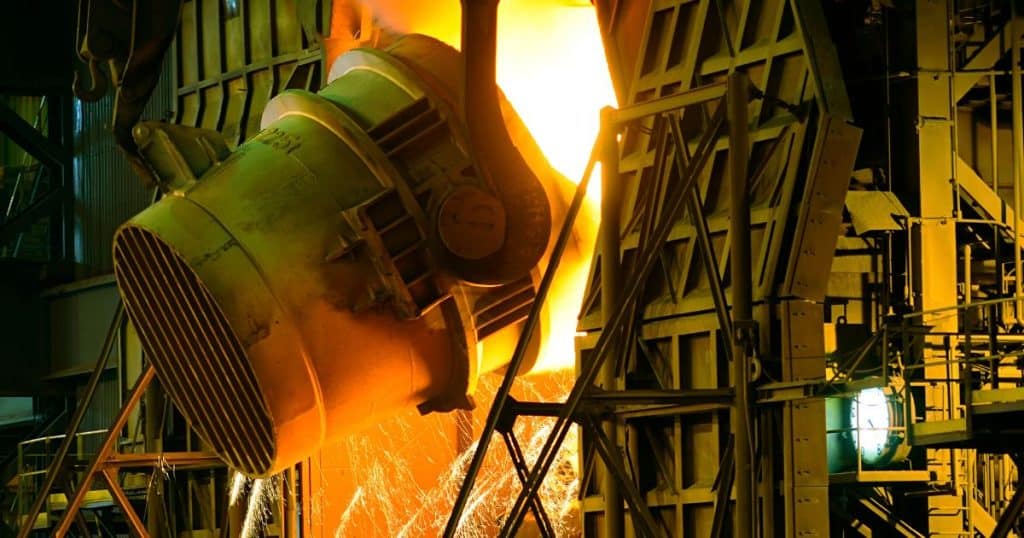
In the next section, we’ll dive into the world of Japanese knife makers and introduce you to some of the best in the business.
The Best Japanese Knife Brands
Japan is home to numerous renowned knife makers, each with their unique style, history, and techniques. Here’s a list of some of the best Japanese knife brands you should know about, their history, most popular knives, and the steel they use for their outstanding forged knives:
Mac
Established in 1964 by Tadafusa Iida, Mac knives gained popularity for their innovative designs and advanced manufacturing techniques. The Mac Professional Series is among their most popular, featuring a razor-sharp VG10 stainless steel blade and comfortable handles. Mac knives are well-loved by professional chefs and home cooks alike for their sharpness, durability, and ease of use.
- BEST-SELLER - Includes our best-selling knife, the MTH-80 Pro series 8" Chef's knife w/ dimples.
- BOLSTERED HANDLES - Add weight without changing the balance point. Helps to drive the knife through harder foods such as carrots and onions. Also allows for a more comfortable chef's grip and easier...
- SUB-ZERO STEEL - Chef's knife features our sub-zero tempered alloy which holds it edge about 10-15% longer than our original molybdenum steel.
- STAIN-RESISTANT MOLYBDENUM ALLOY - Paring and Bread knife made with our stain-resistant molybdenum alloy, which allows our craftsmen to create one of the sharpest out-of-the-box edges of any brand....
- ERGONOMIC PAKKA WOOD HANDLES - Has the feel of wood, but with durability similar to plastic. Comfortable for most users whether left or right-handed. Upswept handles create better knuckle clearance...
Global
Founded in 1985 by visionary designer Komin Yamada, Global knives are known for their distinctive, modern design and all-stainless-steel construction. Their G Series knives are particularly popular, featuring a CROMOVA 18 stainless steel blade for excellent sharpness and balance. Global knives have gained a loyal following for their performance and ease of maintenance.
- Global Knife Set Includes: 3.5" Paring Knife, 5" Prep Knife & 7" Hollow Edge Asian Chef's Knife
- High tech molybdenum/vanadium Cromova 18 high carbon stainless steel blade
- 56-58 Rockwell rating in hardness
- Stainless steel molded dimpled handle for safe grip filled with the right amount of sand to create the perfect balance
- Made in Japan with a lifetime warranty
Shun
A subsidiary of the KAI Group, Shun knives are handcrafted in Seki City, Japan. With a history dating back over 100 years, they are known for their beautiful Damascus steel blades razor-sharp edge, and excellent craftsmanship. Shun’s Classic series, featuring VG-MAX steel cores and 68-layer Damascus cladding, is particularly popular among chefs and home cooks.
- Set includes: 3.5-inch Paring Knife, 7-inch Santoku Knife, 8-inch Chef's Knife, 9-inch Combination Honing Steel, Shun Multi-purpose Kitchen Shears, 8-slot Slim Design Dark Wood Knife Block
- VG-MAX cutting core with 34-layers (each side) and stainless Damascus cladding
- Rockwell Hardness: 60-61; hand-sharpened Japanese double-bevel blade angle 16° (each side)
- D-shaped PakkaWood handle is strong, durable and resists moisture
- Handcrafted in Seki, Japan; hand wash with gentle dish soap and dry immediately
Miyabi
Part of the Zwilling J.A. Henckels group, Miyabi knives was founded in 2004 and combines traditional Japanese craftsmanship with German engineering. Their Artisan series, featuring an SG2 powder steel core and a stunning 100-layer Damascus pattern, is a prime example of the perfect balance of form and function.
- Includes 3.5" Paring Knife, 5.25" Prep Knife, 5.5" Santoku Knife, 8" Chef's Knife, 9.5" Bread Knife, Miyabi Single Magnetic Easel - red oak w/ walnut stain, Miyabi Kitchen Shears, 9" Sharpening Steel
- Blade consists of 133 layers of steel, resulting in a floral damascus pattern
- MC66 MicroCarbide steel is hardened to 66 HRC
- D-shaped handle made from stunning black ash
- Sharpened using a traditional, three step Honbazuke method
Tojiro
Established in 1953 in Niigata, Japan, Tojiro is known for their high-quality craftsmanship, sharpness, and durability. The Tojiro DP series is a popular choice, featuring a VG10 stainless steel core and a three-layer construction for excellent performance at an affordable price.
- Tojiro DP Knife Set Includes: 4" Paring Knife, 6" Utility/Slicing Knife & 8.25" Gyuto Chef's Knife
- Blade features a 3-ply clad construction with a core of VG10 super steel, encased between two layers of highly rigid rust resistant stainless steel
- 60 degree Rockwell Hardness with a 12 degree double bevel edge; suitable for both right and left-handed users
- Extremely durable black micarta handle full tang construction with three stainless steel rivets and stainless steel bolsters
- Made in Japan
Misono
With a history dating back to the 1930s, Misono is a family-owned company that produces knives popular among professional chefs for their excellent performance and attention to detail. Their UX10 series, made with Swedish stainless steel, is highly regarded for its sharpness and ease of maintenance.
- Manufacturer Model Number: 711
- Size: Blade Length: 7.1 inches (18 cm), Total Length: 12.0 inches (30.5 cm)
- Back Thickness: 0.08 inches (2.1 mm)
- Weight: 5.5 oz (155 g)
- Material: High purity pure stainless steel, Handle: Black reinforced wood
Masamoto Sohonten
As one of the oldest knife-making companies in Japan, with a history spanning over 150 years, Masamoto Sohonten is renowned for their high-quality knives and traditional craftsmanship. Their top-of-the-line Masamoto KS series, these White #2 carbon steel knives, are highly sought after by sushi chefs worldwide.
- MASAMOTO SOHONTEN GYUTO CHEF KNIFE: Japanese chef's knife called Gyuto (Gyutou). The Gyuto is the Japanese version of the classic western chef’s knife and is a all-purpose kitchen knife that can...
- EXTRA RAZOR SHARP MASAMOTO KS SERIES: Masamoto KS is a professional product line of high-quality Japanese carbon steel knives. The blade is made of Masamoto’s Gyokuhaku-ko "Shirogami White Steel #2"...
- D-SHAPE JAPANESE WA HANDLE: Lightweight and easy-to-grip d-shaped wooden handle, Ferrule is made of durable natural water buffalo horn. Professional sushi chefs in Japan use this Japanese-style WA...
- AUTHENTIC JAPANESE QUALITY KNIFE: The MASAMOTO-SOHONTEN Knife since 1866. With over 150 year’s history and craftsmanship, the “MASAMOTO” brand is a mark of excellence in quality and performance....
- PRODUCT INFORMATION - Made in Japan / Blade length: 8.2 inches (210 mm) / Blade material: Masamoto's Gyokuhaku-ko (SHIROGAMI White Steel #2) / Handle material: Magnolia wood, Water buffalo horn /...
Sakai Takayuki
With a history spanning over 600 years, Sakai Takayuki knives are known for their excellent quality, sharpness, and traditional craftsmanship. The Grand Chef series, featuring a premium Swedish stainless steel blade, is particularly popular among professional chefs for its superb performance.
- 33 Layers Damascus Hammered Stainless Steel
- VG10 Alloy Core
Nenohi
Founded by master craftsman Yoshihiro Nenohi in 1975, Nenohi knives are hand-forged by skilled craftsmen and offer a perfect balance of sharpness, durability, and beauty. Their Nenox series, made with a proprietary blend of high-carbon stainless steel, is favored by top chefs worldwide for its excellent edge retention and corrosion resistance.
Takeshi Saji
A third-generation master blacksmith, Takeshi Saji is renowned for his unique, artistic knives that combine traditional techniques with modern materials. His R2 Damascus series, featuring an R2 powder steel core and multi-layered Damascus cladding, showcases his exceptional craftsmanship and attention to detail.
Togiharu
Established in the 1940s, Togiharu offers a range of high-quality knives at reasonable prices. Their popular Togiharu Inox series, made with premium Molybdenum stainless steel, provides excellent sharpness and edge retention, making them a favorite among professional chefs and home cooks alike.
Suisin
Established in 1990 by master craftsman Junro Aoki, Suisin focuses on innovation and craftsmanship. Their Suisin High-Carbon Steel Gyutou, made with a high-carbon stainless steel blade, is highly regarded for its sharpness, durability, and performance.
Masanobu
Founded in 1952, Masanobu combines traditional Japanese techniques with modern technology. Their popular VG series, featuring a VG10 stainless steel blade, is known for its precision, sharpness, and ease of use.
Kikuichi
With a history dating back over 700 years, Kikuichi produces knives that are highly valued for their quality, craftsmanship, and attention to detail. Their flagship Kikuichi Warikomi Gold series, made for novices with a VG10 stainless steel core and layered with a softer stainless steel, is their most affordable line. If money is not a factor than look into their Honyaki series.
Each of these Japanese knife makers has its unique strengths and specialties. Whether you’re a professional chef or a home cook, there’s a Japanese knife brand that will suit your needs and elevate your culinary skills.
Which one is the best Japanese knife brand is up to you though. Their is no arguing that the professional Japanese craftsmen are producing high quality kitchen knives, it’s just a matter of which brand fits you, and your budget, the best.
For me, Kikuichi is my go to brand. Their knives are beautiful, not because of pretty Damascus patterns, but because you can see the history of craftsmanship that was involved in producing knives of this caliber. Sounds cheesy I know but once you hold on you will understand.
In the next section, we’ll discuss the most famous “Japanese” knife maker and their contributions to the world of cutlery.
The Most Famous Japanese Knife Maker
When it comes to fame and recognition in the world of Japanese knives, one name often stands out: Bob Kramer. Although not Japanese himself, Kramer is an American bladesmith who has mastered the art of traditional Japanese knife-making. He is highly respected and admired for his expertise in crafting exquisite, high-performance knives that embody the essence of Japanese craftsmanship.
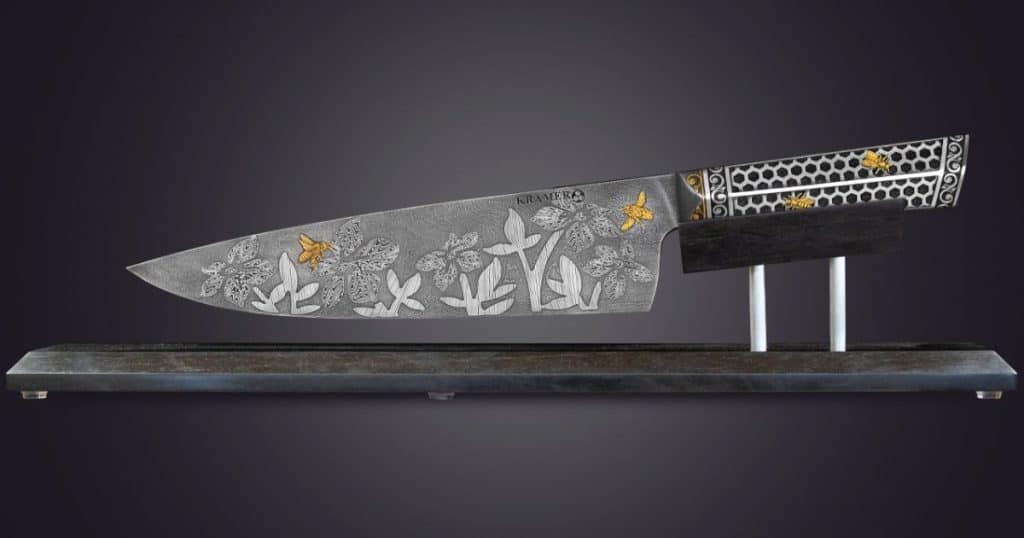
Bob Kramer’s journey into the world of knife-making began when he was working as a chef and discovered the beauty and functionality of Japanese knives. Inspired by their exceptional performance, he decided to pursue a career in bladesmithing, studying under the guidance of a Japanese master bladesmith. Today, Kramer is one of the few certified Master Bladesmiths in the world, specializing in creating knives using traditional Japanese techniques and materials.
Kramer’s knives are highly sought after by professional chefs and collectors alike, known for their unrivaled sharpness, balance, and beauty. Each knife is handcrafted, featuring a unique blend of traditional Japanese and Western design elements. Some of his most popular knives are made with high-quality carbon steel, such as the highly coveted Kramer Carbon Steel Chef’s Knife, which boasts excellent edge retention and ease of sharpening.
In addition to his own line of knives, Bob Kramer has collaborated with Zwilling J.A. Henckels to create the Kramer by Zwilling collection. This line offers a more accessible option for those looking to experience the exceptional performance of a Kramer knife, featuring knives made with SG2 powdered steel for superb sharpness and edge retention.
While there are numerous talented Japanese knife makers, Bob Kramer’s dedication to mastering the art of traditional Japanese knife-making and his unique fusion of Eastern and Western design elements have earned him a well-deserved place among the greats in the world of cutlery. In the following sections, we will delve deeper into the rich history of Japanese knife-making, exploring the oldest Japanese knife companies and the town that has become synonymous with knife craftsmanship.
- Manufactured in Seki, Japan
- Straight carbon steel 52100
- Designed to Master Bladesmith Bob Kramer's exacting specifications
- 61 Rockwell Hardness = exceptional edge retention
- Traditional 3-step hand sharpening for exceptionally high sharpness
The Oldest Japanese Knife Companies
Time travel, anyone? Let’s take a stroll down memory lane and explore some of the oldest Japanese knife companies that have been slicing and dicing for centuries.
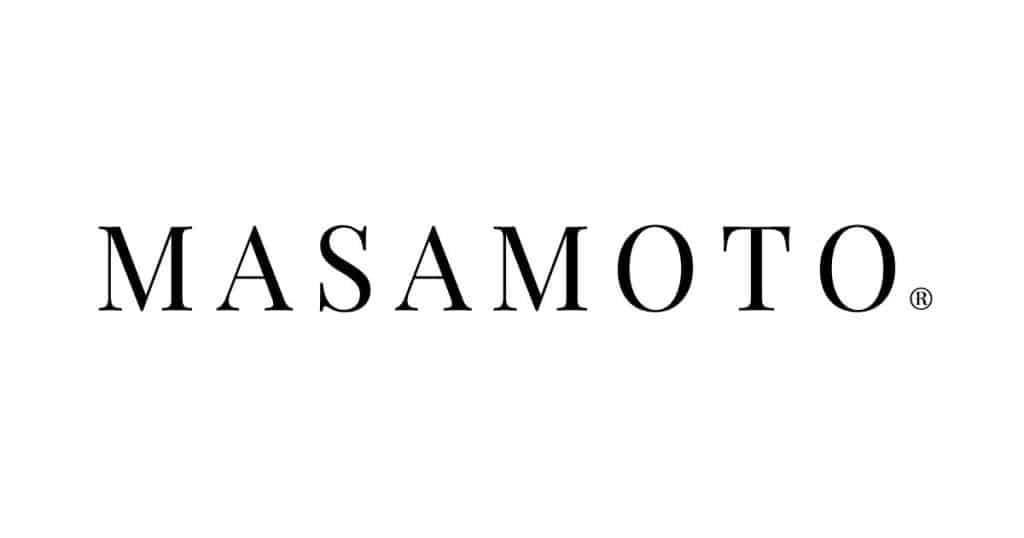
Masamoto Sohonten
Dating back over 150 years.
It’s like the grandpa of knife companies.
Their knives? A sushi chef’s dream.
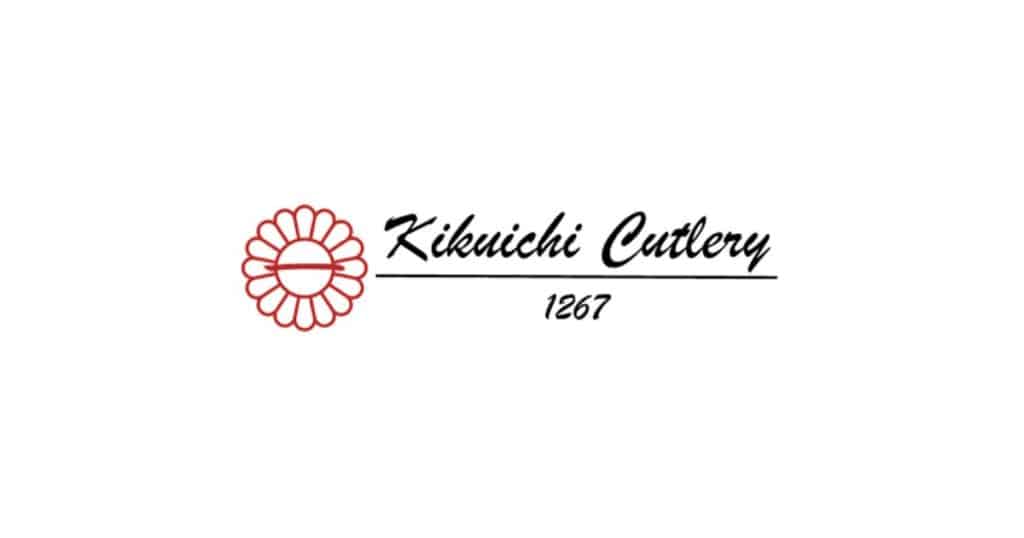
Kikuichi
700 years and counting.
Started making swords for samurais. Cool, huh?
Now, they’re all about top-notch kitchen knives.
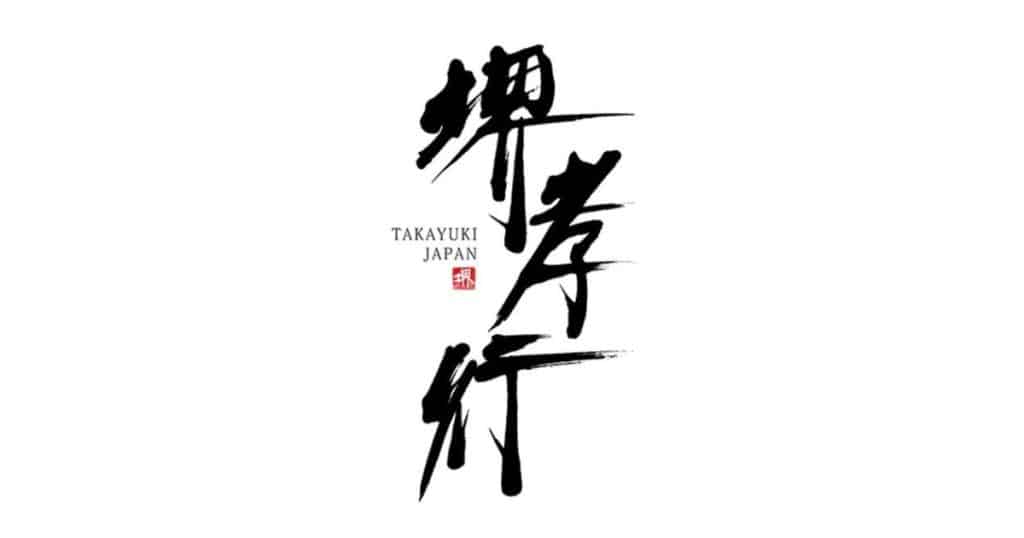
Sakai Takayuki
600 years of experience under their belt.
From samurai swords to chef’s knives.
Quality and sharpness in every blade.
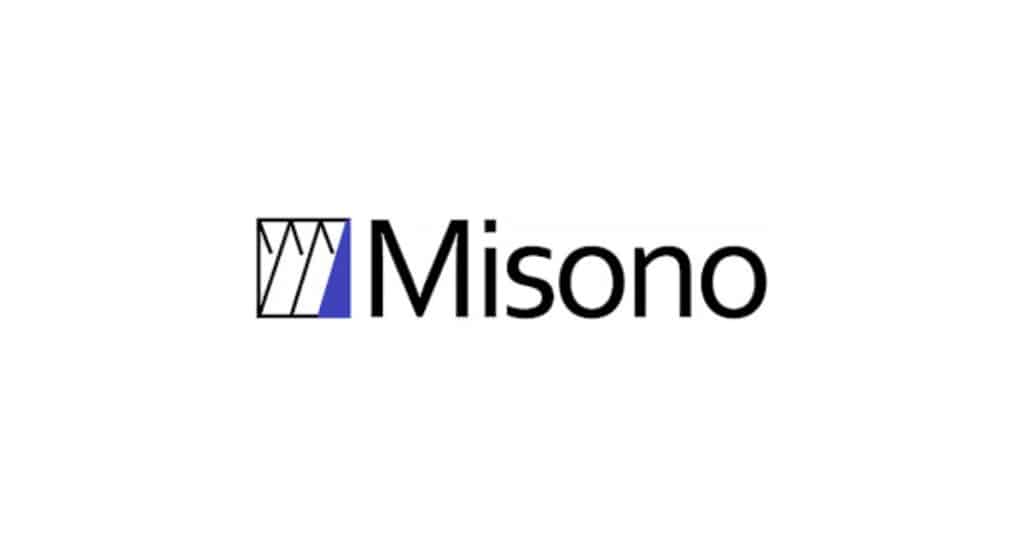
Misono
Around since the 1930s.
A family affair.
Chefs love their UX10 series. Sharp and stylish.
These ancient knife companies prove that age is just a number when it comes to crafting outstanding knives. Next up, let’s visit a small Japanese town that’s big on knife-making.
The Japanese Town Famous for Knives
Get ready to explore Seki City, the ultimate destination for knife enthusiasts! This small town is nestled in Gifu Prefecture, Japan, and has earned itself the nickname “City of Blades.” With a 700-year history of knife-making, it’s no wonder Seki City has gained this impressive reputation.

What sets Seki City apart is its unique forging techniques, deeply rooted in history and tradition. The town is home to over 50 knife manufacturers, benefiting from the high-quality steel sourced from nearby regions. Once famous for crafting samurai swords, Seki City now focuses on producing world-class kitchen knives.
But wait, there’s more! Every year, Seki City hosts an annual knife festival known as the “Seki Cutlery Festival.” This two-day event takes place in October and attracts over 30,000 visitors. It’s a fantastic opportunity to see knife sales, demonstrations, and contests up close.
So if you’re searching for the perfect Japanese knife, consider visiting Seki City, where you’ll be immersed in centuries of knife-making history and expertise. In our next section, we’ll tackle the age-old debate: Japanese or German knives – which are best?
The Great Knife Debate: Japanese Or German?
It’s the ultimate culinary showdown: Japanese knife brands vs. German knives. Which one will emerge victorious? Let’s break it down and find out.
Sharpness
Japanese knives are known for their razor-sharp edges.
German knives are sharp, but not quite as much as their Japanese counterparts.
Winner: Japanese knives
Edge Retention
Japanese knives boast impressive edge retention, requiring less frequent sharpening.
German knives have decent edge retention but may need more frequent touch-ups.
Winner: Japanese knives
Durability
Japanese knives can be more delicate and prone to chipping.
German knives are sturdier and can handle more heavy-duty tasks.
Winner: German knives
Versatility
Japanese knives excel in precision tasks and delicate slicing.
German knives are great all-rounders, from chopping to slicing.
Winner: It’s a tie!
Maintenance
Japanese knives may require more care, such as hand-washing and careful storage.
German knives are often dishwasher-safe and more low-maintenance.
Winner: German knives
So, which knife should you choose? It depends on your priorities and cooking style. If you value sharpness and precision, go for a Japanese knife. If you need a durable, versatile, and low-maintenance option, a German knife might be your best bet. Ultimately, the choice is yours. Happy slicing!
In the next section, we’ll reveal the one knife everyone should have in their kitchen arsenal.
The Essential Knives Every Kitchen Needs
With so many knives on the market, it’s easy to get overwhelmed. But fear not, I’m here to help you navigate the knife jungle! There are three essential knives that every kitchen should have:

Chef’s Knife (gyutuo):
The ultimate multitasker.
Great for chopping, slicing, and dicing.
Investing in a high-quality chef’s knife is a game-changer.
- G2 micro carbide powder steel
- Authentic thin Japanese blade profile
- Hand honed using the three step Honbazuke process to a 9.5 to 12 degree edge
- Handle length:5.39 inch
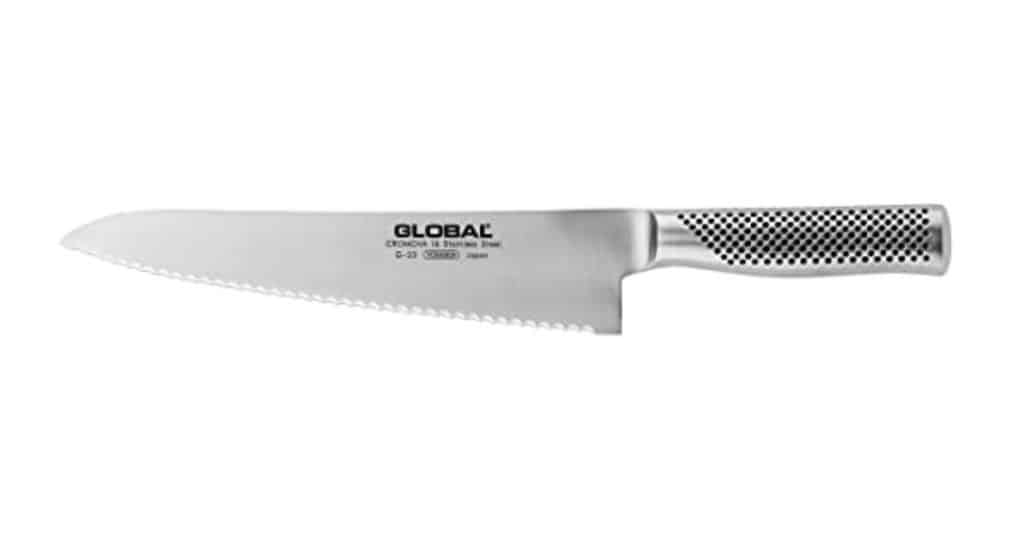
Bread Knife
Serrated blade for easy slicing.
Cuts through crusty bread like a champ.
Also handy for slicing tomatoes, fruits, and even cakes.
Say goodbye to squished bread!
- Thin blades for precision slicing
- Face-ground with long taper so edge remains sharp longer
- Blades made of high-tech CROMOVA stainless steel
- Face-ground with long taper so edge remains sharp longer
- Stainless-steel handles are molded for comfort and dimpled for safe grip

Paring Knife Or Petty Knife:
The small but mighty sidekick.
Perfect for precise tasks like peeling, trimming, and slicing small items.
A must-have for when a chef’s knife is just overkill.
- UTILITY KITCHEN KNIFE: In between a chef knife and paring knife with a narrow, straighter blade, the Shun 6-inch Classic Blonde Utility Knife is the ideal tool for precise cuts like trimming broccoli,...
- SANDWICH KNIFE: Utility knives are sometimes called sandwich knives. They're perfect for preparing almost everything that goes into a sandwich – from thin-skinned vegetables like tomatoes to meats...
- HIGH-QUALITY CONSTRUCTION: Constructed with Shun's proprietary VG-MAX cutting core and clad in 68 layers of stainless Damascus, this kitchen utility knife is corrosion and stain resistant with a...
- COMFORTABLE HANDLE: The D-shaped, blonde Pakkawood handle is durable, beautiful, and comfortable to use for both left- and right-handed users. Plus, it doesn't harbor bacteria.
- TRADITIONAL, ARTISAN CUTLERY: Inspired by the traditions of ancient Japan, Shun knives are handcrafted by highly skilled artisans to produce blades of unparalleled quality and beauty.
By equipping your kitchen with these three essential knives, you’ll be prepared to tackle nearly any culinary challenge. Whether you choose Japanese or German knives (or a mix of both), make sure to invest in quality and maintain them properly. Your kitchen skills will thank you!
Key Takeaways
Before we wrap things up, let’s take a moment to summarize the highlights from our deep dive into the world of Japanese knife brands.
Japanese knives are known for their exceptional sharpness, precision, and craftsmanship.
Some of the top Japanese knife makers include Mac, Global, Shun, Miyabi, Tojiro, Misono, Masamoto Sohonten, Nenohi, Sakai Takayuki, Takeshi Saji, Togiharu, Korin, Suisin, Masanobu, and Kikuichi.
Bob Kramer, an American Master Bladesmith, has earned a place among the greats for his expertise in traditional Japanese knife-making.
Seki City, Japan, is famous for its 700-year history of knife-making and is home to numerous knife manufacturers.
When choosing between Japanese and German knives, consider your priorities and cooking style. Japanese knives excel in sharpness and precision, while German knives offer durability and versatility.
With this newfound knowledge, you’re ready to make an informed decision when selecting your next kitchen companion. And remember, a quality knife is an investment in your culinary skills and enjoyment. Happy cooking!
The Cutting Edge: A Journey Through Japanese Knife Brands
As we’ve explored the fascinating world of Japanese knife brands, it’s clear that these exceptional tools have earned their esteemed reputation. The dedication to craftsmanship, precision, and tradition is evident in every slice and dice.
With our guide to the top knife makers, the history of Japanese knife-making, and the pros and cons of Japanese vs. German knives, you’re well-equipped to make the perfect choice for your kitchen.
Remember, investing in a high-quality knife will not only enhance your cooking experience but also serve you for years to come. So, whether you’re a professional chef or a home cook, take the time to explore the world of Japanese knives and find the ideal companion for your culinary adventures.
With the right tools by your side, you’ll be able to create mouthwatering masterpieces that delight your taste buds and impress your guests. Happy chopping!
Frequently Asked Questions
What Is The Oldest Knife Shop In The World?
Aritsugu, founded in 1560, is considered the oldest knife shop in the world. Originally a swordsmith, Aritsugu now specializes in producing high-quality Japanese kitchen knives.
How Old Does A Knife Have To Be To Be Vintage?
Generally, a knife is considered vintage if it’s at least 20-30 years old. However, the term “vintage” can vary depending on factors such as rarity, condition, and craftsmanship.
Who Is The Most Famous Knife Maker?
While there are many well-known knife makers worldwide, one of the most famous is Bob Kramer, an American Master Bladesmith. He has earned a reputation for his expertise in traditional Japanese knife-making and his fusion of Eastern and Western design elements.
What Knife Did Anthony Bourdain Use?
Anthony Bourdain was known to use a Global G-2 8-inch Chef’s Knife as his go-to tool in the kitchen. This lightweight, well-balanced knife is made by the Japanese brand Global, which is renowned for its sharpness and precision.
In addition to his appreciation for Global knives, Bourdain was also an admirer of Bob Kramer knives. He wrote passionately about Kramer’s exceptional craftsmanship and skill in creating custom knives that blended traditional Japanese techniques with modern design elements. Bourdain even owned and cherished a custom-made Kramer knife that went to auction after his death.

